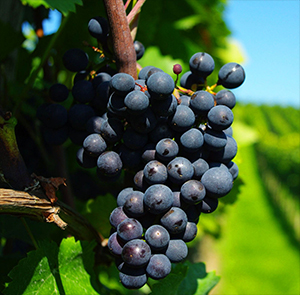 DELIVERY FROM £4.95
DELIVERY FROM £4.95 FREE DELIVERY FOR ORDERS OVER £100
FREE DELIVERY FOR ORDERS OVER £100Home » Community » Wine and Grape Guide » Recantina

The Recantina is an ancient and almost forgotten red grape variety native to the Treviso province in Veneto, with its origins deeply rooted in the Montello hills. Historical records and local traditions indicate that Recantina was once widely cultivated across the area. However, like many native Italian varieties, its cultivation dramatically declined following the devastating spread of phylloxera in the late 19th century. Despite its near extinction, a few determined growers and researchers have kept the variety alive, and today, Recantina is experiencing a slow but exciting revival among those passionate about Italy’s native grapes.
Ampelographers - experts in grape classification - have identified two distinct biotypes of the variety: Recantina a pecolo scuro (dark stalk) and Recantina a pecolo rosso (red stalk), both of which exhibit subtle but important differences in morphology and wine expression. The vine is vigorous and productive, with medium-sized, round berries that have a thick, waxy, dark blue-black skin, and a compact bunch structure. The leaves are medium, pentagonal, and five-lobed.
Wines made from Recantina grapes are visually striking, boasting a deep ruby red colour with vibrant purple hues. Aromatically, they are expressive and elegant, offering a complex bouquet of wild berries, violets, black cherries, cloves, and gentle spices. On the palate, Recantina delivers a full-bodied, well-structured wine with robust but refined tannins, a firm backbone, and a long, lingering finish. These characteristics make Recantina wines excellent companions to grilled meats, aged cheeses, and hearty Italian dishes. With proper ageing, the wine’s structure softens, and its aromatic profile becomes even more nuanced and layered.



Before we say ciao, why not join our newsletter & stay up to date on everything happening on planet Italyabroad.com